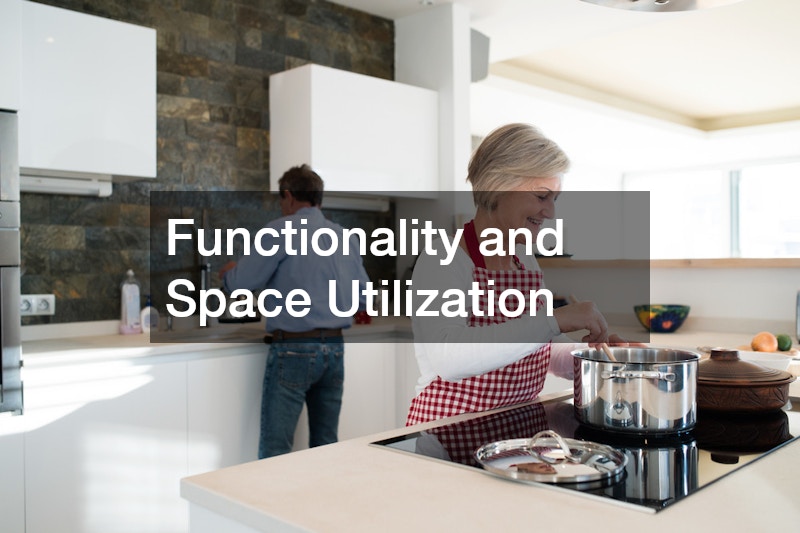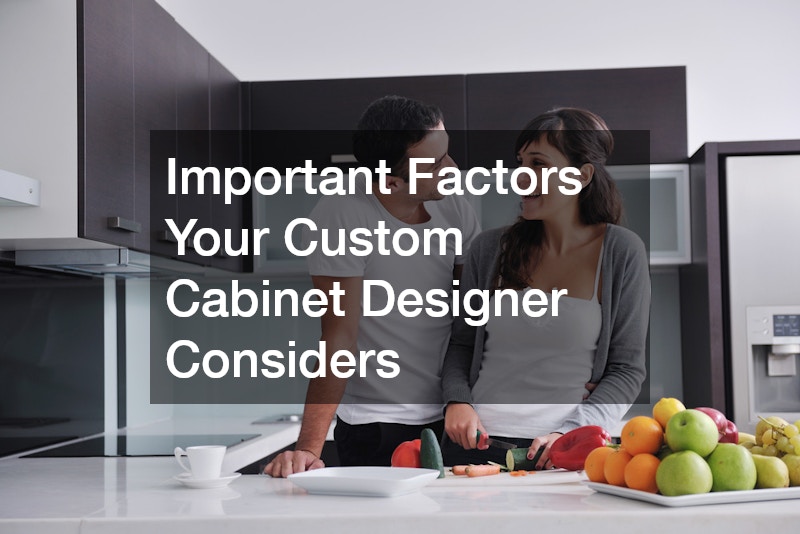One of the primary responsibilities of a custom cabinet designer is to ensure that the cabinets not only fulfill their functional roles but also enhance the aesthetic appeal of a space. This means carefully considering the style, finish, and color of the cabinetry to ensure that it complements the overall design scheme of the room. Whether the goal is to create a traditional, modern, or transitional look, the designer must balance style with purpose.
Great designers possess an eye for detail and a deep understanding of current trends, enabling them to suggest designs that can elevate the space. Additionally, they work closely with clients to understand their personal preferences and incorporate unique touches that reflect the homeowner’s personality.
The choice of materials is another significant aspect that a custom cabinet designer considers during the design process. High-quality materials not only contribute to the durability and functionality of the cabinets but also impact their overall appearance. Cabinet designers often recommend a variety of materials, including solid wood, plywood, and medium-density fiberboard (MDF), each with its own advantages and price points. They assess the home’s climate conditions and intended use of the cabinets to recommend the most suitable material. By integrating the right materials with the design, they ensure the cabinets are both beautiful and built to last.
Finishes and hardware are the final touches that bring a cabinet design to life. The custom cabinet designer must consider everything from the finish type—whether it be painted, glazed, or natural wood—to the selection of handles and knobs that will complete the look. These choices, although seemingly minor, play a crucial role in defining the cabinet’s aesthetic and user experience. A well-chosen finish can protect the cabinets and make maintenance easier, while thoughtfully selected hardware can offer both functionality and flair. Custom cabinet designers often present a variety of options to their clients, guiding them through the decision-making process to ensure satisfaction with the final product.
Functionality and Space Utilization

Functionality is at the heart of any custom cabinetry project, as a custom cabinet designer’s aim is to craft solutions that meet the specific needs and lifestyle of the homeowners. This requires a profound understanding of the client’s usage habits and storage requirements. Designers analyze how a family uses their kitchen, bathroom, or other spaces to create a layout that maximizes efficiency. This often involves innovative solutions such as pull-out shelves, lazy Susans, or deep drawers for pots and pans. By prioritizing practicality, designers ensure that the custom cabinets not only look good but also serve a meaningful purpose.
When creating custom cabinet solutions, space utilization is an essential factor. Custom cabinet designers excel at turning challenging spaces into functional storage areas without sacrificing style. They meticulously plan each component to ensure that no space is wasted, employing techniques such as vertical storage solutions and integrated organizers. Understanding the spatial dynamics and traffic flow of the room is critical, as cabinets should enhance rather than hinder the natural movement of users. By optimizing the available space, custom cabinets can make even small rooms appear larger and more organized.
Budget and Sustainability
Setting a budget is a critical step in any custom cabinetry project, and a custom cabinet designer plays a pivotal role in managing budgetary constraints while still delivering high-quality results. The first task is to clearly understand the client’s financial limits and expectations. Designers use their expertise to suggest cost-effective solutions without compromising on quality or aesthetics. This may involve recommending alternative materials, methods, or finishes that align with the client’s budget while still achieving the desired outcome. Transparency and communication are key, ensuring clients understand where their money goes and how to get the best value out of their investment.
In recent years, sustainability has become an important consideration for custom cabinet designers. Many clients are looking for eco-friendly solutions that reduce their carbon footprint and promote a healthier living environment. Designers consider this demand by recommending sustainable materials, such as bamboo or reclaimed wood, and finishes that emit low levels of volatile organic compounds (VOCs). By prioritizing sustainability, they contribute to environmental conservation while creating safer and more responsible products. Custom cabinet designers play a significant role in educating clients about the benefits of sustainable choices and demonstrating how green design can be both beautiful and functional.
Lastly, a custom cabinet designer must remain adaptable and innovative as the industry continues to evolve with new technologies and methods. Keeping abreast of the latest advancements enables designers to offer cutting-edge solutions that enhance both efficiency and style. For instance, integrating smart technology into cabinetry is an emerging trend, allowing for features such as app-controlled lighting and automated organizers. By embracing innovation, designers can deliver bespoke solutions that cater to the modern homeowner’s needs. This commitment to progress ensures clients receive not only beautifully crafted cabinets but also future-ready designs that add convenience and value to their homes.
